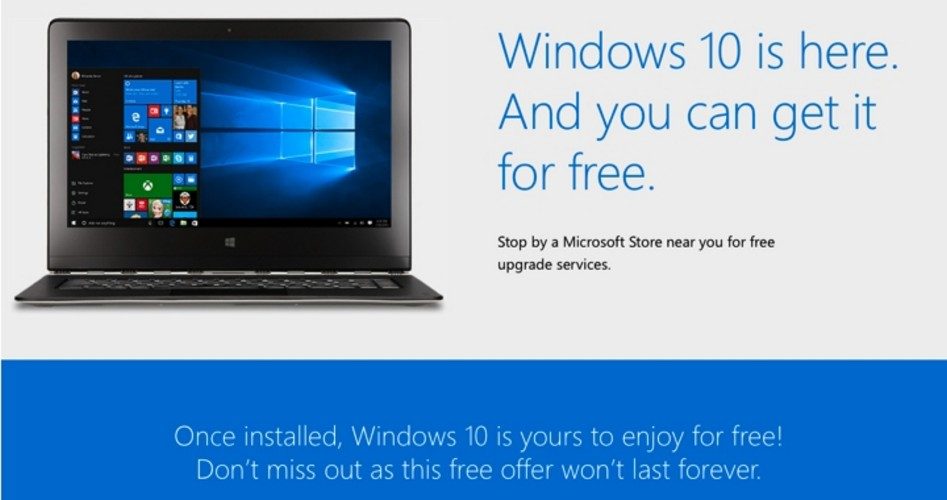
When Microsoft released Windows 10 on July 29, the new operating system was already mired in controversy due to the way it monitors users’ activities and reports back to Microsoft. Many news sites including The New American wrote about the spyware features of Windows 10. Some considered that reporting to be little more than fanciful conspiracy theories and exaggerations.
With recent admissions from the Redmond, Washington, software giant, however, it is now clear that those reports were accurate and that Windows 10 — as an operating system — is spyware.
From the outset, Microsoft decided on the previously unheard of move of making the new operating system available free of charge in a rolling update to all current users of Windows 7, 8, and 8.1 via Windows update. Many wondered why the company would give away licenses to use the new operating system. As The New American reported at the time:
It appears that the reason is simple: greater data-mining opportunities. Windows operating systems have long included security weaknesses that leave users vulnerable to spying and data-mining from others. What is different with the newest iteration of Windows is that Microsoft is directly involved in that spying and data-mining and has built the entire operating system in such a way as to allow it.
The Microsoft Services Agreement and its accompanying documents, to which one must agree before installing or using any Microsoft product or service, run roughly 40,000 words and would take 110 pages to print. Agreeing to these documents grants Microsoft the right to read, save, and share anything stored on or accessed using any computer running Microsoft Windows, as well as any computer using any Microsoft products or services.
What this means is that users who “upgrade” to Windows 10 or who purchase a PC with Windows 10 preinstalled have already agreed to allow Microsoft to read every e-mail, private message, calendar entry, document, and any other text; to view all photos, videos, charts, graphs, and any other graphic; to monitor and record all web traffic, searches, and downloads; and capture all keystrokes. Microsoft is then able to save and share that information at its discretion. As The Microsoft Privacy Policy puts it:
We will access, disclose and preserve personal data, including your content (such as the content of your emails, other private communications or files in private folders), when we have a good faith belief that doing so is necessary.
Privacy advocates pointed out the ludicrous danger of having an operating system that is itself spyware. Microsoft apologists attempted to brush those concerns aside, saying the dangers were being blown out of proportion. After all, they said, turning these “features” off is a simple matter of changing the privacy settings.
As we said then, it is not such a simple matter. In fact it is an incredibly laborious task, and in some instances may not even be possible:
Because Windows 10 is set up to allow all this data collection by default, disabling data collection (where it is even possible to do so) will also disable most of the features that are the main selling points of the operating system. In addition, it is an arduous and time-consuming process involving going through at least 13 different screens in the privacy settings.
Many Microsoft users elected to keep their current operating systems and refused the “update” when they were notified that it was available to them. In late August, Microsoft — in an apparent move to broaden its spyware capabilities — changed the way it sends software updates to PCs running Windows 7, 8, and 8.1. Software updates, which had previously included a description with enough detail to allow users to make an informed decision about whether or not to install the update, began simply coming in without any description of the update or what it does. The new description said only that the update “includes improvements to enhance the functionality of Windows.”
At about the same time, as we reported:
To make matters worse, Microsoft seems to be rolling out updates to Windows 7 and 8 that bring them into line with the “spyware” elements of Windows 10. Because Microsoft’s Services Agreement and Privacy Policy apply to all products and services offered by Microsoft, it looks as though the company is expanding its spying to include Windows 7and 8. The New American covered the specifics of these agreements in a previous article. According to hakspek.com, “new updates that are being deployed to all Windows 7, 8 and 8.1 machines will turn their computers into a big piece of spyware, just like” Windows 10.
Again, privacy advocates and Microsoft apologists disagreed. Those on the privacy side of the fence cried foul. Those on the Microsoft side said the answer was to disable the updates and keep using Windows 7, 8, or 8.1. After all, no one is being forced to update or accept new “features.” Except the problem with turning off automatic updates is that it can leave computers even more vulnerable to attacks and viruses, since the gaping security holes, for which Windows is famous, would never be patched.
Then, in mid-September, Microsoft users began getting the entire Windows 10 “upgrade” downloaded and installed on their PCs via those automatic updates — even if they had declined the download. Microsoft was simply going to make that decision for them. The files were downloaded to a hidden folder and the user was given a notification that their “upgrade” was ready. All they had to do was start the installation. Or not. Because in multiple cases, users would restart their PCs only to find Windows 10 was fully installed and operational.
As Forbes reported:
Microsoft changed the ‘Optional’ upgrade status of Windows 10 without any warning. The subtle change simply ticked the box beside the upgrade by default in Windows Update on Windows 7 and Windows 8. This meant an upgrade to Windows 10 would be automatically performed the next time the user installed any Important updates.
Microsoft has implemented a two-phase plan to force Windows 10 on all users of Windows 7, 8, and 8.1. The first phase is to change the classification of the Windows 10 update to “Optional,” which will cause all users who have their PCs set to accept all updates (the recommended setting) to download and install Windows 10 automatically. This step is already in place. The next phase, which is set to begin in early 2016, will change the classification of the Windows 10 download to “Recommended.” This is the default setting for all PCs running Windows 7, 8, and 8.1. What this means is that all but the most tech savvy users will be forced into Windows 10.
Some still argued that this is not really that big an issue, because Windows 10 is better and people are going to upgrade eventually anyway. This just makes it easier. Besides, all that stuff about Microsoft spying on you through your PC is just a goofy conspiracy theory anyway, right?
Wrong.
In late October, PCWorld reported that Microsoft Corporate Vice President Joe Belfiore admitted that it is not possible to turn off all those surveillance settings. They are part of the operating system and that is that. “In the case of knowing that our system that we’ve created is crashing, or is having serious performance problems, we view that as so helpful to the ecosystem, and so not an issue of personal privacy, that today, we collect that data so that we make that experience better for everyone,” he said. He went on to assert that the surveillance settings that cannot be turned off are not about privacy, saying, “In the cases where we’ve not provided options, we feel that those things have to do with the health of the system, and are not personal information or are not related to privacy.”
That rings a little hollow after reading those sections of the The Microsoft Privacy Policy that allow Microsoft to scan the entire contents of users’ hard drives and capture keystrokes while monitoring web traffic and reading e-mails.
As many users finally get their fill of Microsoft’s heavy-handed policies that threaten both privacy and liberty, many of them are looking for alternatives and finding that Linux — which in almost all cases is free to download and install — fits the bill nicely. As this writer has said before about the differences between Windows and Linux:
By way of comparison, users who install any of the various distributions of the Linux operating system do not consent to any such agreements. In fact, the closest thing in Linux to any of this is a feature in Ubuntu that allows users to search Amazon from their desktop screen. That feature is easily disabled by clicking a single button.
Maybe users of Windows 7 and 8 who are concerned about privacy and liberty should consider declining Microsoft’s offer for a free upgrade and simply “upgrade” to Linux.
In fact, in an article last year about how users can secure their PCs and data against surveillance by both overreaching governments and nosy corporations, this writer recommended replacing Windows with Linux. With the recent revelations about what Microsoft is doing, it may be worthwhile for more people to take a look at that option.
[In the interest of fairness, the writer of this article has been a Linux user for several years and does not use any Microsoft products or services. This article was written on his System76 Bonobo Extreme running Ubuntu 14.04 using LibreOffice 4.2.]




